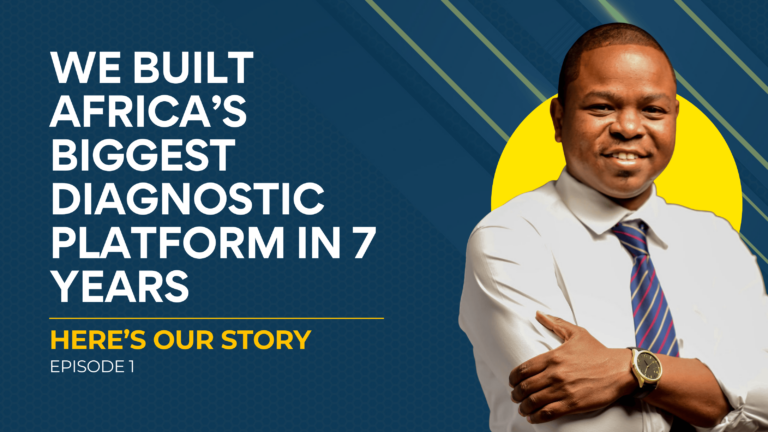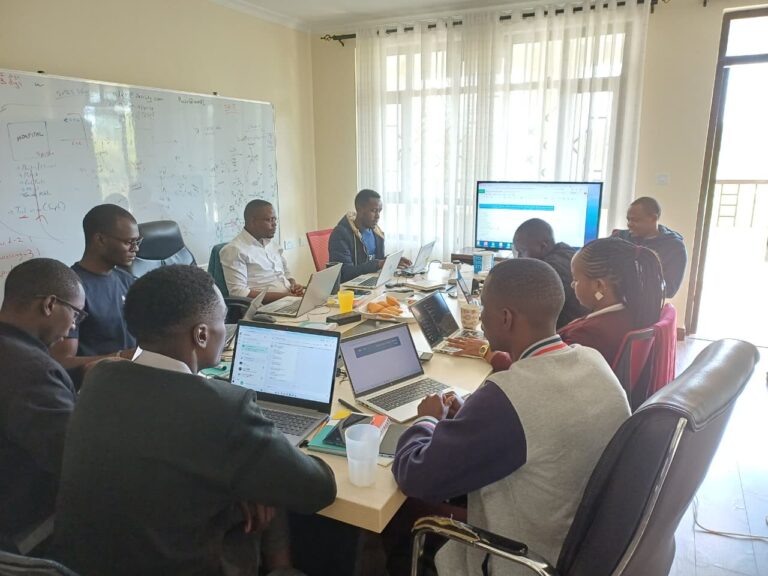
Banking on Sustainable Pathology
The Pathology Network is revolutionising healthcare logistics through its partnership with eWAKA, a delivery service that provides a versatile range of eco-friendly transportation alternatives.
What started as a cost-reduction initiative to transform how medical samples move across Kenya’s capital has evolved into a comprehensive sustainability strategy.
TPN’s Head of Kenyan Operations, Evans Mugambi, reveals that the company initially targeted 30-40% savings in logistical costs but has achieved an impressive 67% reduction by switching to electric bicycles.
“As a technology company, we recognise that future mobility is about e-mobility,” he explains. The transition addresses dual challenges: reducing operational costs—from 300 shillings to 110 shillings per route—and minimising carbon footprint in healthcare delivery.
The pilot programme, which currently focuses on slide transportation, has provided the organisation with unprecedented transparency, allowing real-time monitoring of deliveries and eliminating communication bottlenecks. The green initiative has also positioned TPN strategically for future investments.
“The goal is to eventually have a fully-fledged, environmentally friendly logistics division. We can only achieve that by starting to align and learn from initiatives like this one. When you look at the number of logistical trips we’re making that are affiliated with healthcare, it’s significant. We’re still in the learning phase, gathering experience from the best practices in terms of environmental sustainability.”
Here’s the full interview excerpt:
1. Can you tell us about The Pathology Network’s decision to partner with an eco-friendly logistics provider? What drove this initiative?
There were two main reasons driving this decision. First and primarily, it was about the cost model differences between our operations in Meru and Nairobi. In Meru, the RC (Regional Coordinator) is stationed in close proximity to the lab, so samples can be delivered directly.
However, in Nairobi, we needed traditional motorcycle riders, and the logistical costs were quite high. Some costs hadn’t been factored into our test pricing since our model assumed the RC would be stationed within the lab. The main driving force was, therefore, to reduce logistical costs, which seemed quite high in our current model. We were also looking to reduce the company’s carbon footprint.
As a technology company, we recognise that future mobility is about e-mobility, so reducing our carbon footprint was important. We were initially looking at savings of 30–40%, but with eWAKA, we’ve been surprised to achieve savings of almost 67% (between 60–67%). It’s important to note that we’re still in the pilot phase with eWAKA – we haven’t fully settled on them yet.
2. What specific criteria did you use when selecting eWAKA as your green logistics partner?
One key criterion was the ease of making logistical orders. eWAKA has software that provides transparency – you can make orders online, track deliveries in real time, see where the rider is, and there’s proof of the package being shipped as they upload images on the software.
Cost was another major factor. For routes where we would previously pay 300 shillings, we’re now paying 110 shillings. This cost structure has been set as a trend by service providers in this space.
3. How has the transition to eWAKA’s eco-friendly logistics affected your day-to-day sample coordination operations?The transition hasn’t been as positive as we hoped in terms of speed efficiency. The riders use electric bicycles, which are slower than traditional motorcycles. However, from an operational efficiency perspective, there have been benefits.
Traditionally, we had to make phone calls to coordinate pickups, and if someone’s phone was off, we had no options. Now, we simply make an order online. I can view and see when orders are placed, so there’s efficiency in that sense – no more back-and-forth trying to reach the right person.
4. What changes have hospitals and labs noticed in terms of service quality or delivery processes since implementing green logistics?
We decided to start the first phase primarily with slides shipment from labs to us, so we haven’t really involved samples with hospitals yet. We’re doing a low-risk profile first with slides, and if we think eWAKA performs well enough, we’ll proceed to the next phase involving sample shipments.
From that perspective, there hasn’t been any impact on hospital facilities or labs yet. However, I believe they’ve also noticed the green initiative. When you look at some lab locations, like Tria Lab in buildings with many consultants and patients, having eco-friendly bikes instead of noisy, polluting motorcycles creates a positive environmental impact. The green message we’re driving
seems to be spreading to other institutions.
5. Have there been any operational challenges in making this transition to eWAKA, and how did you address them?
One major challenge is that eWAKA doesn’t seem to have enough riders. This means the one rider we depend on is equally engaged in conducting other logistical services for other people. When we make an order, we have to wait for prolonged periods for collection and delivery. They need to scale up and engage more riders.
The challenge also comes from a sensitisation perspective. In Nairobi generally, the majority of riders still use fuel/petrol motorcycles, so it’s difficult to convince someone to move to charging devices (electric bikes). The demand exceeds their capacity to meet it.
We tried to address this by requesting dedicated riders, but that would mean changing to a different pricing model since a dedicated rider would park at Pine Tree Plaza purely for TPN. This would be costly because we wouldn’t utilise the rider every day or every minute. So we remained with the on-demand model, which seems popular but isn’t very efficient for urgent
deliveries.
6. What specific environmental improvements has the partnership with eWAKA delivered? Can you quantify any reductions in carbon footprint or waste?
We don’t have the metrics to measure carbon footprints ourselves, but eWAKA’s website has very interesting statistics about their environmental impact. They show the number of kilometres they’ve covered through e-mobility and the amount of emissions they’ve prevented from a fossil fuel burning perspective.
If you need specific distance data from our operations, we can share the number of trips we’ve made and the routes, so you can calculate the kilometres per trip and multiply accordingly. But in terms of carbon emissions and footprints, we don’t have our own metrics to measure that.
7. How critical is it for healthcare logistics to prioritise environmental responsibility while maintaining the urgent nature of medical sample transport?
It’s critical for several reasons: First, given the industry we’re in – healthcare – we’re providing a diagnostic tool to help people get results from the best specialists, regardless of geographical coverage. If we can also play a part in reducing carbon footprint, that’s walking the talk from a preventive healthcare point of view.
Second, looking at future partnerships, we hope to eventually have our own in-house logistics courier service – a TPN logistics division with our own fleet of bikes and riders. We can only achieve this by learning from the best. It’s more cost-effective, and we know the positive environmental impact.
Third, from a partnerships and investment perspective, when investors are looking into investing in tech companies, environmental consciousness is one of the key things they’re particular about. This makes us a more suitable venture to invest in.
8. What are TPN’s next steps in expanding your environmental sustainability efforts?
The goal is to eventually have a fully-fledged logistics division. We can only achieve that by starting to align and learn from initiatives like this one. When you look at the number of logistical trips we’re making that are affiliated with healthcare, it’s significant. We’re still in the learning phase, gathering experience from the best practices in terms of environmental sustainability.
9. Looking ahead, what environmental goals has TPN set for the next 2-3 years?
Honestly, I don’t know if we have any specific environmental goals set, but given the number of logistical trips we’re making, it’s high time we start aligning and learning from the best. I’m not sure we have any formal policies around being eco-friendly yet, but we now need to start having these conversations. This interview itself is one of them – it’s the very first step in that direction.



